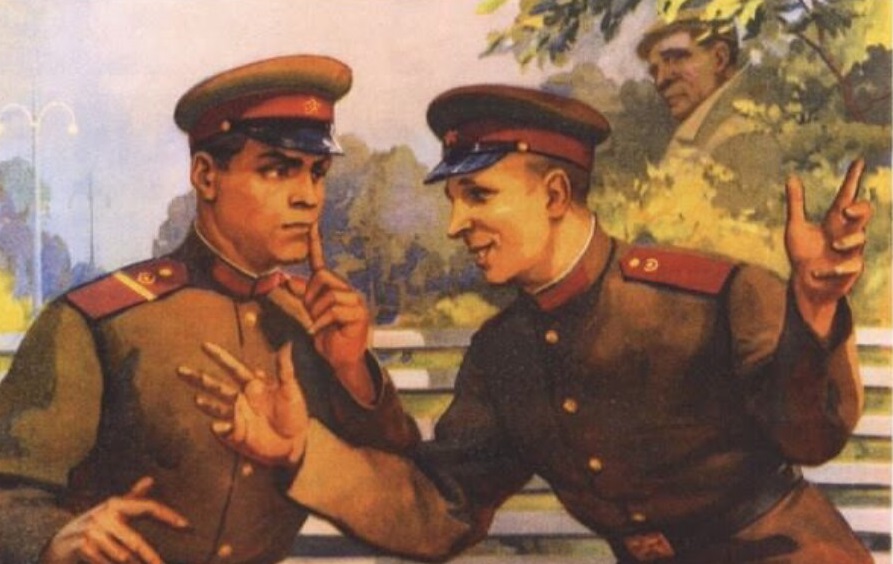How do you spot propaganda on social media? The advancement of propaganda online is a pressing issue. We are now faced with a constant onslaught of manipulative information campaigns from government and corporate sources across the entire length of the political and economic spectrum.
We must learn how to navigate information in our digital age, so this post will point out some of the ways that you can spot propaganda online. In many areas, this is similar to how propaganda has always been disseminated (particularly since the beginning of global broadcast media) but there are new methods emerging as social media platforms have become so prominent and a primary source of information for many.
The list below isn’t an exhaustive one, but hopefully it will help you consider the sources of information you receive and the agendas that might lie behind them.
Perhaps more importantly, it should help us take pause and consider the information we are broadcasting on behalf of others. By doing so, we can become active agents of our own collective destiny and not just mouthpieces for unknown powerful interest groups.

1. Anonymous Sources
Anonymous sources should not be taken at face value. Not only are they unaccountable due to their anonymity, but they often emerge from the very organisations/agencies that are regularly putting pressure on political and socioeconomic spheres for their own unspoken ends.
If you look back at some of the fruitless journeys the media have led us on in recent years, they are littered with anonymous government (particularly intelligence agency) sources and other unnamed wellsprings of information that are fertile breeding grounds for manipulation.
Protecting sources is an important journalistic process, but pay attention to where the anonymous source is coming from and the nature of the communication. For the most part, intelligence agency sources (from any country) won’t have our collective best interests to heart. Beyond that, you should require further evidence before any claims from anonymous sources are taken as legitimate. Perhaps they point us towards something worth investigating, but they cannot stand in for the investigation itself as so often seems to be the case these days.
Look For: unnamed sources with leaked information, particularly any that targets specific political or corporate opponents; anonymous accusations that are merely statements, without specific evidence presented.
2. Closed-Door Briefings
Building upon the use of anonymous sources are the often-used ‘intelligence briefings’ that politicians will be privy to, that are used to give credibility to otherwise unsubstantiated claims.
The key issue with these briefings is that they amount to little more than saying ‘trust us, we’ve seen the evidence and it’s compelling’; but without either the respect or trust in the public to share any evidence openly so that it can be properly scrutinised. Briefings are open to skewed perspectives, omitted facts and the erosion of truth. They become a birthing pool for propaganda campaigns that aim to be more sustained than the daily soundbites of anonymous sources. Without understanding the evidence provided in a briefing, we can’t interrogate the information presented; nor can we know whether it was even passed on to the public accurately. Any instance in which the evidence cannot be directly scrutinised should be seen as untrustworthy when it comes to forming our opinions about important social issues.
Look For: relayed information that comes out of a ‘briefing’ but cannot be shared publicly due to reasons of ‘national security’; no alternative perspectives on what the briefing contained; zero evidence available for scrutiny other than second-hand affirmations that it was ‘compelling’.
3. Distracts from the Issues
Not all propaganda is direct. In fact, most of it acts as a distraction to get you to focus on something that draws attention away from other heinous acts. The media is constantly dialing in on new soundbites to search for information to present the public; but in reality, the inability to focus attention on a single issue for long periods of time is widely used as a propaganda technique through distraction.
This is often used when it comes to seeking justice for the actions of those in power and their overreach, either through shifting the narrative to another issue (we’re going to see justice for those global financial crimes any day now, right?) or through a process of character assassination of victims or whistle-blowers. If that doesn’t work, a suitable target will be put forward to focus attention onto an individual’s wrong-doing over systemic issues.
Look For: returning to the familiar focal point for attacks, regardless of new topics; new stories that quickly distract from previous ones; if a story can’t be buried, it will be laser-focused onto specific individuals as scapegoats.
4. Omitting the Topic
Linked to the use of distractions, another way of limiting debate (a key purpose of propaganda) is to consistently omit a topic until it is barely visible. Some clear examples of this can be found in the deaths of innocent civilians during war (going so far as to label them ‘enemy combatants’); the role of intelligence agencies in arms dealing, drug running and blackmail operations; or more generally by focusing on specific elements of wrong-doing (e.g. the amount of tax paid by one individual) to draw attention away from larger systemic issues (i.e. how the international taxation system is set up for the wealthy).
Acknowledging a topic gives it room to be explored and analysed, so often the first tactic of a propaganda campaign is to remove any unwanted references altogether and make sure the spotlight is firmly on the elements in which other tactics can be utilised to control debate and influence the wider outcomes.
It’s also often the case that particular individuals will be made an example of so that a semblance of justice can be displayed while side-stepping the need for larger systemic change.
Look For: topics that are consistently ignored and rarely raised, even with clear evidence; topics that deserve further debate but are immediately dismissed as irrelevant to the current conversation.
5. Common Talking Points
You will see this indicator in both political and corporate information campaigns and it is one of the more open and transparent forms of online propaganda. When you spot common phrases regularly popping up, then they are often being fed from a single source and dispersed across multiple voices in order to strengthen a chosen message while also giving a sense of grassroots (or editorial) support.
An open form of this comes from political surrogates, who are expected to bring certain talking points to any conversation and just keep repeating them. It’s also how think tanks operate, by producing reports (based on varying weights of evidence) that are then fed in summary form to politicians and activists to seed conversations with specific talking points.
This is also a calling card of bot-account campaigns, as they will be fed a single piece of information and then parrot that in many locations and time-zones to have the most reach.
Look For: the same phrases being used in different places; drawing back to a talking point, even if only loosely relevant; common statistics used in various media outlets; references to specific think tanks as a source of information.
6. Lacks or Misuses References
You see this one a lot in regards to statistics, particularly those used in infographics or internet memes. If a statement doesn’t have a source reference, it’s generally not worth listening to. If it does have a source reference, and it’s saying something that you find interesting or relevant, then you need to go and check that reference to see how the information has been used… or perhaps misrepresented.
Just because a statement gives a source reference, doesn’t mean the material was represented accurately. It’s even sometimes the case that references that speak against the point are linked in order to build credibility for a statement, with the understanding that few people would bother checking that the material supported the statement being made.
Look For: Specific statistics without a source; emotional statements about economic impact of a particular course of action; links to references that don’t match the statement being made.
7. Highly Politicised
Propaganda, by definition, is an act of political manipulation of information in order to achieve specific goals. One of the key markers that can be used to spot items of propaganda is how consistently a certain narrative is used to politicise a topic, even to the extent that the original issue is no longer relevant (or quietly dropped) but rather the desired political outcomes become the focal point.
Highly politicised narratives of this kind aren’t always based on falsehoods or manipulated truths. They are often based on factual information, but it then becomes how that information is used to achieve certain end goals (rather than fixing the core issue) that becomes the form of propaganda to watch out for.
Look For: Information that is denigrating a political opponent; lack of any concrete action to fix an issue, just pointing at who is to blame; projection of wrong-doing (i.e. the source of the statement is equally guilty of the same or similar).
8. Invisible Enemies
This is a staple of propaganda, an invisible enemy that is having a hugely detrimental impact and yet there are no concrete examples of such. A perfect example of this is ‘X country is manipulating public sentiment’ (e.g. ‘Russia did it’). It’s impossible to disprove the statement because, to a certain extent, it will almost certainly be true (every country is running propaganda campaigns) but the extent to which they are having an impact is almost certainly being grossly overstated.
This kind of propaganda is hugely successful and influential, because it becomes a catch-all that anybody can use to attack someone they disagree with. It’s also difficult to provide evidence that something doesn’t exist or isn’t having a huge impact. However, the absence of case studies and clear examples is generally an indication that this kind of propaganda is being used.
Look For: References to groups/nations without specific examples or individuals accused of specific crimes; a phrase or issue that is consistently referred to in regards to different problems (e.g. ‘foreign interference’); shifting the same enemy as the cause of one problem to another.

9. Emotive Slogans
Online propaganda often relies on quick, automatic responses that work on emotion rather than more carefully considering the repercussions through.
We see this primarily through political slogans, which are forms of propaganda designed to instill a clear message at a glance, but it’s also regularly applied in advertising. There are even more subtle examples in long-term cultural campaigns designed to either denigrate or uplift specific demographics of people.
This is also the purpose of hyperbolic headlines as the generators of propaganda know that many people don’t delve any further than the heading and maybe a few sentences into an article. Don’t be one of those people. Look beyond the emotive slogans and headlines and analyse the information you are being presented with.
Look For: tabloid-style headlines; references to how you as an individual should feel; emotional statements instead of providing evidence.
10. Language of Uncertainty
One of the ways that propaganda creates confusion is to state things that are plausible, but unverifiable. This is different to the outright lies that many people think that propaganda is, but it’s much more insidious. Building off of the use of ‘anonymous sources’ and ‘closed-door briefings’, you can spot propaganda often by the high level of qualifying language used that allows a press article to essentially say anything without being held to account for its truthfulness.
This kind of language is easy to overlook, but once you are looking for it really sticks out. Phrases such as ‘most likely’; ‘seems to’; ‘implies that’; ‘inferred’… basically any language that requires a gap between the evidence gathered and the conclusion being presented should be looked upon with suspicion. If you start to see a lot of that kind of language coming from the sources supposedly providing the evidence, then it’s even more of a clear sign that you are looking at a piece of deliberate propaganda (rather than just a biased media article).
Uncertainty is key in propaganda, because it removes any possibility of accountability while still being able to place images and emotions into the minds of the people consuming it.
Look For: Keywords as above slipped into sentences that remove any accountability, while also showing that the issue being presented isn’t certain; often linked with anonymous sources or closed-door briefings; allegedly, perhaps, probably, likely that, projected to etc.
11. Evidence to Come
This tactic links with many of the others above. Disinformation agents know that people are (slowly) becoming more savvy to many of the traditional propaganda tactics, so they link it with the promise that all the hard evidence is imminent.
The anonymous intelligence source has briefed necessary politicians, who will be talking to the key evidence; the whistle-blower has sent all the hard documents to the media, to be published soon; an announcement is coming from a person of authority; arrests are imminent. This tactic pushes any sense of accountability into the future, which means that the propaganda being disseminated can’t be dismissed at the point of contact before it is acted on.
This tactic adds a sense of credibility to a statement being made, but with our short attention spans few people will follow up to find out whether such evidence was ever actually released (spoiler: it wasn’t).
Look For: Leaked statements about ‘bombshell’ evidence that isn’t yet available; the proof is always just around the corner; evidence promised that doesn’t come.
12. Character Attacks
Attacking someone’s character to avoid dealing with more important issues is a well-known tactic. Although the credibility and integrity of sources is relevant when considering the validity of any evidence presented, this tactic is often used when large scandals come to light in order to distract from the content presented. It also serves to create a new talking point that relies on the popularity of scandalous gossip over more sophisticated discussion.
This tactic is widely used against whistle-blowers to discredit the information they are sharing; or to turn the topic of conversation entirely onto any supposed crimes they have committed rather than considering the crimes of others they have brought to light.
Look For: stories brought up from the past to discredit someone; witness statements that speak to a flaw in an individual’s integrity or reliability; character attacks in response to a high-profile release of secret information.
13. AI Bots Assembled
The fact that the internet has become overrun with bots and fake accounts is now well known, but it’s still easy to overlook just how sophisticated these can be. With the recent attention on the GPT-3 AI and its ability to write relatively convincing (on surface level) articles about many different and complex topics, we are starting to become more aware of this issue and it deserves close scrutiny.
When it comes to spotting propaganda, you often find that large numbers of bots/fake accounts (it’s hard to distinguish between the two these days) will push an agenda to give it a sense of widespread acceptance and appeal. Increasingly, this is taking the form of structured comments that act either in favour or against an issue. They arrive quickly (in order to steer the narrative that follows) and can be programmed to respond automatically to specific keywords or topics immediately as they arise on public platforms.
They are also used to help things ‘go viral’ while pushing down any other competing information that might be vying for space on our rapidly moving social media feeds. The rise of AI bots online deserves a much longer write-up, but for now it’s important to recognise that they exist and are a central part of modern propaganda campaigns.
Look for: cut-and-paste talking points on social media; strange grammatical errors in longer texts; rapid upvotes/likes/viral status; large amounts of similar comments/viewpoints being expressed quickly.

Conclusion: Critique the Source / Target / Evidence
There are three elements that you should look at with any piece of information. You need to critically assess:
the source of the information;
whom the target is and why;
the validity/weight of any evidence provided.
Not all sources are created equal and it’s important to consider the bias of any particular agent. We all know this for outlets such as Fox News or MSNBC, and it’s obviously the case for political parties, but we sometimes don’t consider how this operates for other sources/authors of information. It’s also important to realise that just because something comes from a source with clear biases, doesn’t necessarily mean that the information they provide is false. Indeed, this is often used as a form of counter-propaganda through character attacks that distract from the issue. However, having an understanding of the source and its general approach and inherent agendas is helpful with the next two aspects. It’s also important to understand the weight of accountability behind what they are claiming.
Secondly, examine the target of the information. Is it election season and political opponents are being smeared left, right and center? Does the information only have one specific target? Who will profit from the information being released? Has the target/subject of the information been allowed to respond? These are the kind of questions you should be asking when considering any information released about a specific target. Note that some propaganda campaigns are positively framed to uplift a specific target and your opinion of them, rather than attack them.
Finally, it’s important to examine each piece of evidence presented. Anything that leads to an assumption or claim should be critiqued for its strength of evidence and verifiability. For example, a confession from someone under duress should not be accepted at face value; particularly without supporting materials. A photograph or video is a moderate piece of evidence (albeit one that is becoming weaker every day in the new era of deep fake technology and digital image manipulation). Affidavits from multiple, independent sources with backing material documents is strong evidence. This is why it’s important to properly digest information and read through the full articles or reports, because only then can you understand what evidence is being presented and the relative strength of such.
Applying the techniques of critical thinking and using concepts of primary and secondary sources will build up a picture of how strong the evidence really is. This will help you decide how seriously to take the information and whether or not you should respond to it as likely valid or not. If in doubt, don’t trust the information until you find other supporting materials or follow up reports.
Avoid sharing things based on headlines only and start to get a sense of how information warfare and propaganda works in the modern age. The more you look for it, the more you’ll see it. You will then also start to recognise it quickly, while being able to spot authenticity and valid journalism more readily.
Sometimes it feels like there is more propaganda than objective information in our modern public lives, so it’s important to recognise that the actions we take as individuals can help break that cycle of abuse. With this list and going back to the basics of critical thinking when analysing evidence, you will be able to act purposefully and form your opinions wisely. By doing so you can avoid acting as another automated node in the vast broadcast system of modern propaganda campaigns that seek to control our thoughts, words and deeds.






